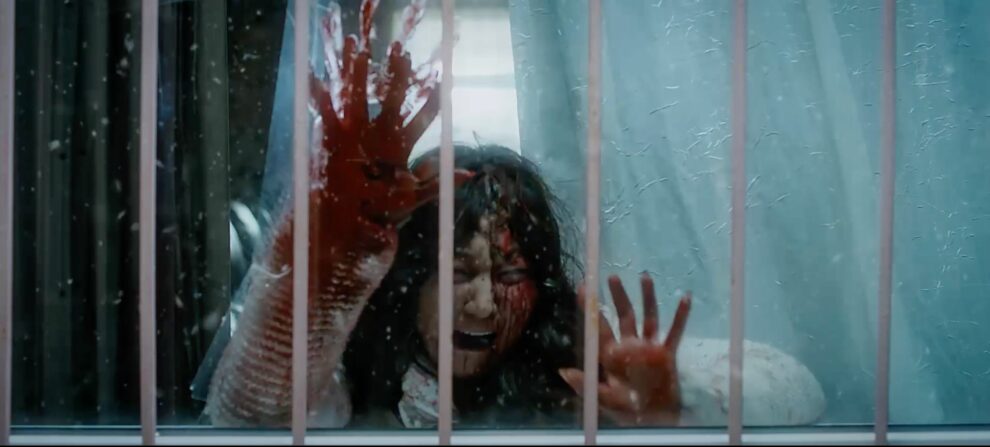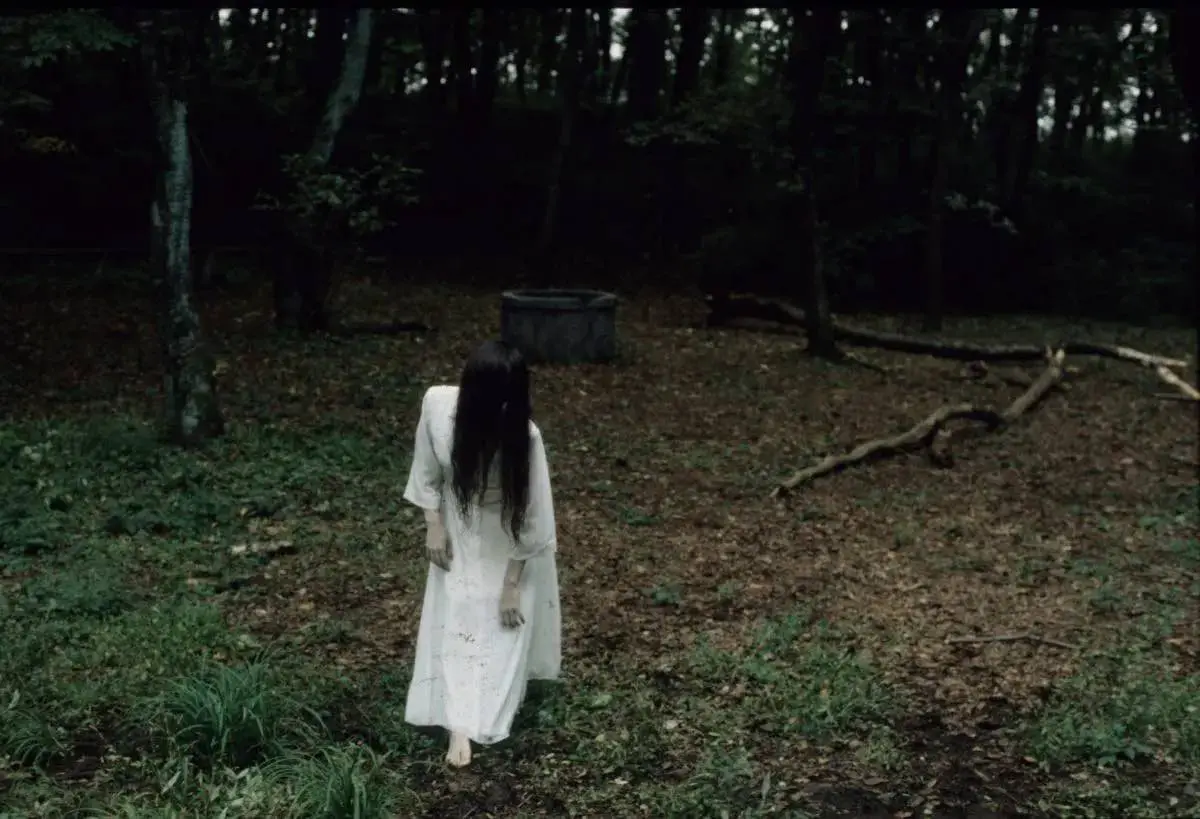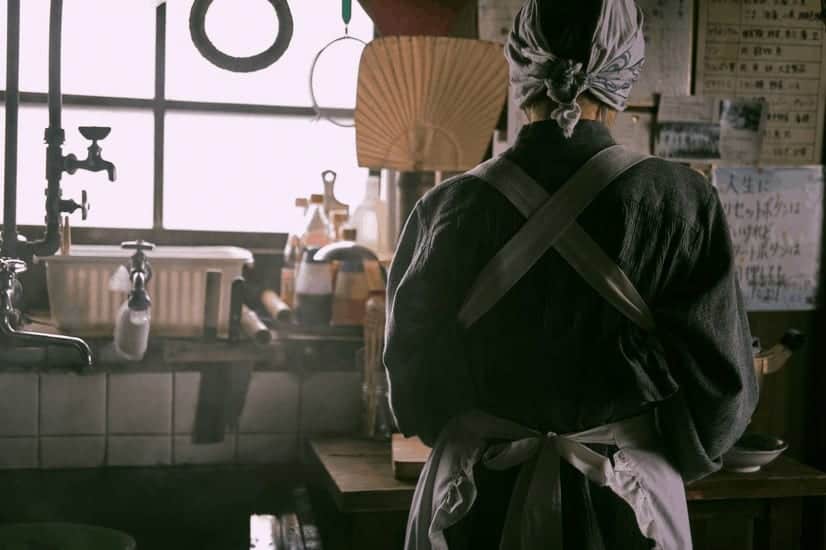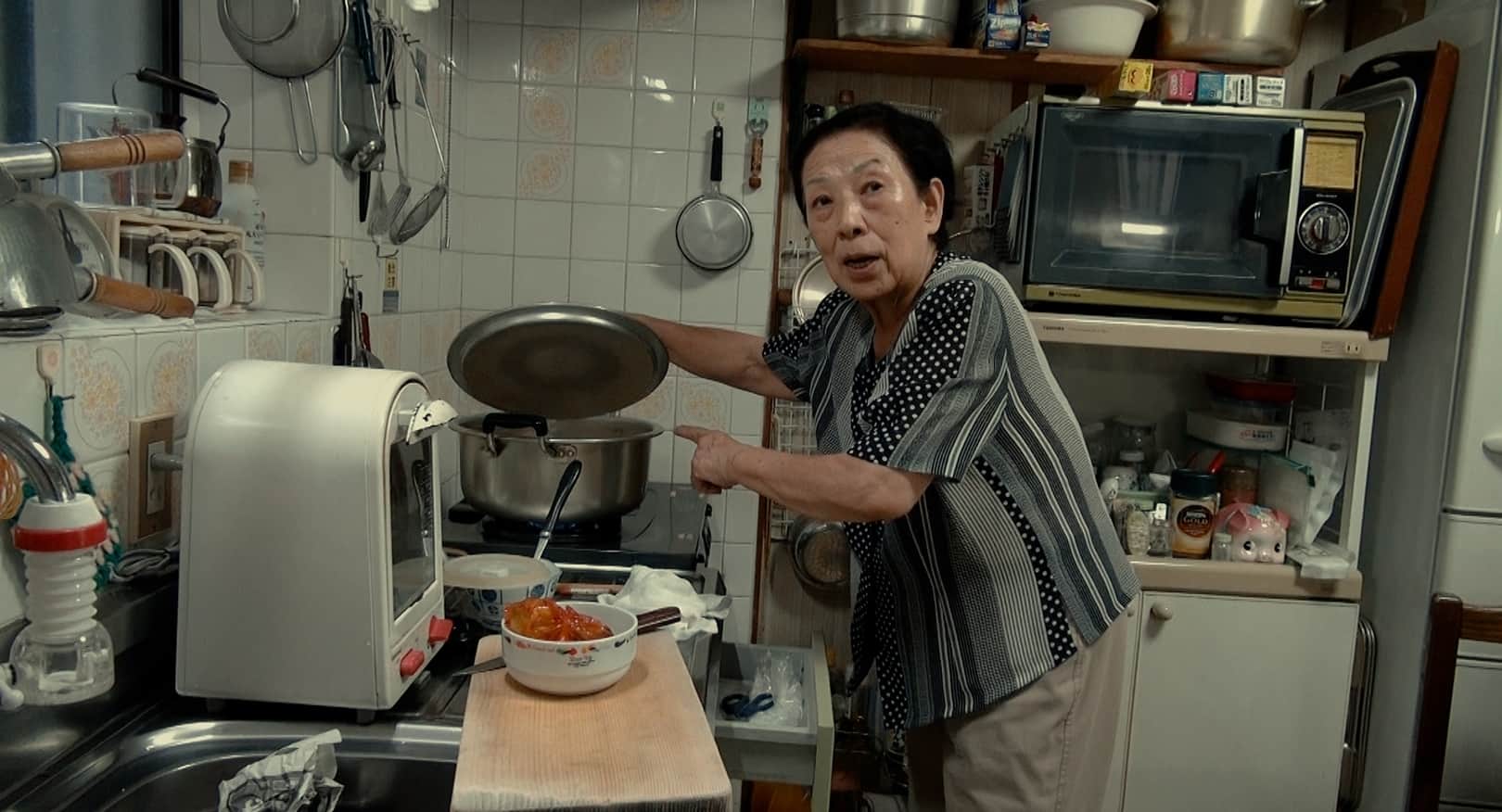It seems that Mongolian movies have been taking steps forward towards genre paths, with the recently released “Disorder” being a testament to this fact. Baatar Batsukh, an experienced cinematographer in his directorial debut, makes his effort in genre filmmaking with “Aberrance”, a claustrophobic horror that premiered in Oldenburg before screening at SXSW. It is now being released in the US, as the first Mongolian horror movie to do so.
Aberrance will be released in North American cinemas starting October, 6, courtesy of Freestyle Digital Media
Erkhmee and his wife Selenge arrive at an old cabin deep in the Mongolian wilds, for reasons that are initially unknown. When Selenge spots a dead cat in the garbage bins nearby, it becomes evident that something is wrong with her. When the seemingly polite, but essentially nosy to the point of stalking neighbor starts watching the couple from every angle possible, it is revealed that Erkhmee is violent and mistreats his wife. The arrival of two friends of hers, and particularly of Sanaa, increases the tension, even more so since the neighbor does not seem to be willing to let go. As time passes, violence becomes a more significant factor, while the appearance of a doctor complicates things even more.
Check also this interview
That Baatar Batsukh was a DP before getting in the director's chair becomes obvious from the beginning, since the best aspect of the movie is definitely the cinematography and in general, the visual aspect of the movie. In that fashion, Batsukh takes full advantage of the secluded, snowed forest setting to create an atmosphere of disorientation, claustrophobia, and eventually, horror. The various visuals “definitely” help in that regard, with him using tracking shots, shaky camera, “fogginess”, but most significantly, an intensely voyeuristic approach deriving from the neighbor, which adds an element of creepiness that works quite well for the overall atmosphere. Lastly, the coloring, and particularly the splashes of red on occasion are quite impressive to watch, cementing the overall impressive visuals, which will definitely remind viewers of “A Tale of Two Sisters” which seems to be one of the main influences of the director, in that regard.
In terms of narrative, as stated in the end of the movie, Batsukh tries to pay homage to Aronofsky and particularly “Mother” and the fact that a large part of the narrative seems to revolve around the question of who is the aggressor and who the victim, and eventually, the role of the rest of the protagonists. Some parts work in that regard, particularly in the way Selenge is portrayed, with Selenge Chadraabal in the role being quite good, reminding of the mother on “Moebius” on occasion, particularly in the moments she acts all crazy. However, after a point, and particularly as the ending comes closer, Batsukh loses his sense of measure, trying to include as many twists as possible. That everything is turned on itself with every scene definitely does not help, with the story becoming too far-fetched, even for the genre.
Zoljargal Erdenekhuyag's editing works well for the most part, with the cuts adding to the aforementioned atmosphere, but at 75 minutes, it seems that the movie would benefit for some more minutes, in order for the whole thing to make more sense.
On the other hand, and complementing Chadraabal's performance, the majority of the actors give quite intriguing performances, presenting their ambiguity convincingly. Yalalt Namsrai as the neighbor in particular, highlights that there is something very wrong with him, under his seemingly polite facade, from the beginning, while Oyundary Jamsranjav emits a permanent sense of mystery as the Doctor.
“Aberrance” has its issues regarding its narrative and the overall writing, but the cinematography, the acting, and its rareness as a Mongolian horror movie, make it a title that definitely deserves a watch.















